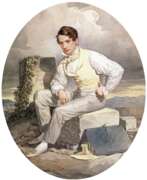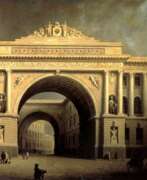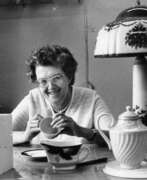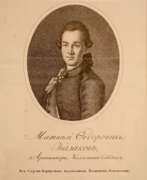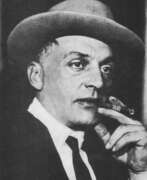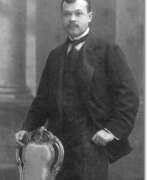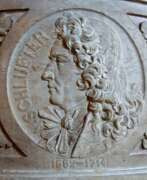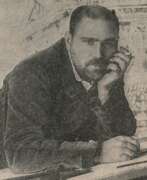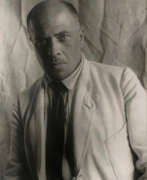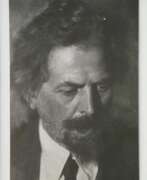Architects Russia


Valery Vladimirovich Androsov (Russian: Валерий Владимирович Андросов) is a Soviet and contemporary Russian artist. He is known as a sculptor, architect, designer, painter, graphic artist and teacher.
Valery Androsov creates landscapes, still lifes and portraits, as well as fantasy works. He is also known as the author of a large collection of ex-libris that accurately convey the character and interests of book owners. At different periods he served as chief artist of the Mosstroiplastmass Combine and director of the Mytishchi Picture Gallery. He also created monuments to those who died in the Great Patriotic War and to the pilots of the Mytishchi Aero Club, showing his skill in various artistic directions.
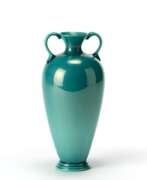

Giuseppe Kjachig is an artist outside the academic framework, was extremely versatile: a mosaicist, architect, decorator and painter, he was born in Russia because his parents were commercially active there, but retained Italian citizenship.
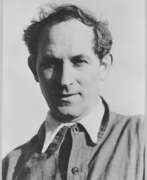

Naum Gabo, a pivotal figure in the evolution of twentieth-century sculpture, was a Russian-American artist renowned for his innovative approach to constructivism and kinetic art. Gabo's artistry transcended mere form to delve into the philosophical and spatial dynamics of sculpture, marking him as a pioneer in his field. He significantly influenced the avant-garde movements across Europe, particularly with his manifesto that challenged the concepts of Cubism and Futurism, advocating for art that embraced abstract reality and spiritual experience. His tenure at VKhUTEMAS, alongside notable contemporaries like Kandinsky and Rodchenko, was a testament to his influential role in post-Revolution Russian art.
Gabo's use of materials such as metal and glass was not just a stylistic choice but a profound exploration of volume and space without the reliance on mass, embodying the Constructivist ideology of functional art. His works, like "Column," showcased his interest in creating sculptures that resonated with intellectual and emotional appeal rather than just physical senses. This innovative approach to sculpture continued throughout his career, evident in his contributions to both the art and architectural domains, including his experimental architectural designs like the proposal for the Palace of the Soviets.
Throughout his life, Gabo's artistic journey was marked by a constant exploration of the interplay between space and time, evident in pieces such as "Spiral Theme" and his involvement in kinetic sculpture. His move across countries, from Russia to the United States, was reflective of his quest for new artistic contexts and his escape from political turmoil. Gabo's legacy is preserved in significant collections and museums worldwide, including the Museum of Modern Art (MoMA) in New York, where his works continue to inspire and captivate audiences.
For those intrigued by Naum Gabo's profound impact on modern sculpture and constructivism, signing up for updates can enrich your knowledge and keep you informed about upcoming sales and auction events featuring his work. This is an opportunity to explore the depths of Gabo's contributions to art and architecture, ensuring enthusiasts and collectors stay connected to his enduring legacy.
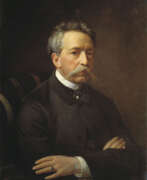

Prince Grigorii Grigorevich Gagarin (russian: Григорий Григорьевич Гагарин) was a Russian painter, illustrator, art researcher, and architect.
He was born into the family of a diplomat, Prince Grigorii Ivanovich Gagarin (1782-1837), who was soon sent to Italy to fulfill the duties of ambassador. Gagarin's house in Rome was the center of cultural life of the Russian diaspora, Alexander and Karl Brullov, Bruni, Shchedrin, Basin, Galberg were regular guests there.
Grigorii early showed a talent for painting, he took lessons from Brullov, after trips to the East he became fascinated by the art of Byzantium. Later, during his service in the Caucasus, he painted in this style the Sion Cathedral in Tiflis. Gagarin also successfully illustrated works of Russian writers, including Pushkin's poem "Ruslan and Lyudmila" and "The Tale of Tsar Saltan", in 1845 he published in Paris an album "Costumes of the peoples of the Caucasus" of 66 hand-colored lithographs.
In 1841 Gagarin was enlisted in the military service and participated in campaigns in the Caucasus. In addition to military duties, he worked a lot for the needs of the Caucasian cities. In Tiflis on his project was built a theater, he restored frescoes in the Sion Cathedral and in old Georgian monasteries.
In Russia, Gagarin's social circle included Zhukovsky, Pushkin, Odoyevsky. Grigorii Gagarin did a lot as vice-president of the Imperial Academy of Arts (1859-1872), trying to reform it in the spirit of the time, founded the Museum of Antiquities. In 1880, Gagarin was made an obra gofmeister of the court of His Imperial Majesty.
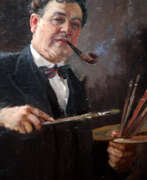

Aleksandr Mikhailovich Gerasimov (Russian: Алекса́ндр Миха́йлович Гера́симов) was a Russian and Soviet painter, born on August 12, 1881, in Kozlov (now Michurinsk), in the Tambov Governorate of the Russian Empire. He is best recognized for his leading role in promoting socialist realism in visual arts, notably through his portraits of Joseph Stalin and other Soviet leaders. Gerasimov's education at the Moscow School of Painting, Sculpture, and Architecture honed his skills, guided by masters like K.A. Korovin, A.E. Arkhipov, and V.A. Serov. His style, a blend of academic realism with impressionistic influences, vividly depicted the Russian landscape, leaders, and the daily life of the Soviet era.
His works, rich in emotionality and composition mastery, span across various themes from state portraits to landscapes and still lifes, showcasing a deep love for the Russian landscape's innate beauty. Gerasimov's contributions to art include not only significant political portraits but also captivating scenes of nature and life in Russia, marked by their emotional depth and vibrant colors. His paintings like "Stalin and Voroshilov in the Kremlin" won him the Stalin Prize in 1941, cementing his status in Soviet art history.
Gerasimov's artistry extends beyond his political work; his landscapes and portrayals of Russian expanses convey a deep lyrical sentiment, reflecting his profound connection and love for his homeland. His mastery across various mediums—oil, watercolor, gouache, and more—allowed him to explore and express a wide range of subjects, from portraits and landscapes to still lifes, showcasing his versatility and depth as an artist.
For those interested in the intersection of art and history, Aleksandr Mikhailovich Gerasimov's work offers a fascinating window into Soviet-era Russia, its leaders, and its landscapes. To stay updated on exhibitions and sales of Gerasimov's works, sign up for updates specifically focused on new product sales and auction events related to this distinguished artist.


Lazar Markovich Lissitzky (Russian: Ла́зарь Ма́ркович Лиси́цкий) was a pivotal figure in the avant-garde art movement of the early 20th century, whose contributions spanned across multiple disciplines including painting, architecture, and graphic design. Born in Pochinok, Russian Empire (now in Smolensk Oblast, Russia), Lissitzky is renowned for his profound influence on the development of Constructivism, a movement characterized by the integration of technology and industry into the arts.
Lissitzky's work is distinguished by its innovative use of geometric forms, bold colors, and dynamic compositions, which sought not only to reflect the modern industrial world but also to actively participate in shaping it. His artworks and theories were instrumental in bridging the gap between the avant-garde movements in Russia and Western Europe, facilitating a cross-cultural exchange that enriched the development of modern art. Among his most notable contributions are his "Proun" series, an acronym for "Project for the Affirmation of the New" in Russian, which encapsulates his vision of art as a transformative social force.
His legacy is preserved in some of the world's most prestigious museums and galleries, including the Museum of Modern Art in New York and the Russian State Museum in Saint Petersburg. These institutions house key works that exemplify Lissitzky's groundbreaking approach to art and design, making them a focal point for collectors and experts in the field of art and antiques.
For those deeply invested in the evolution of modern art and its profound impact on culture and society, Lissitzky's work offers invaluable insights into the creative exploration of form and space. His contributions continue to inspire contemporary artists and designers, emphasizing the enduring relevance of his vision.
We invite collectors and art experts to sign up for updates on new product sales and auction events related to Lazar Markovich Lissitzky. This subscription is an opportunity to stay informed about the latest acquisitions and offerings that celebrate the legacy of a visionary artist whose work continues to resonate with audiences worldwide.


Sergey Vasilyevich Malyutin (Russian: Сергей Васильевич Малютин) was a distinguished Russian painter, architect, and designer, celebrated for his multifaceted contributions to the world of art and design. Born in Moscow in 1859 to a merchant family, Malyutin's artistic journey began after an exhibition by the Peredvizhniki inspired him to pursue art. His formal education at the Moscow School of Painting, Sculpture and Architecture honed his talents, leading to a diverse career that spanned painting, set design for operas and ballets, and architectural endeavors.
Malyutin is perhaps best known internationally for designing the first matryoshka doll in 1890, a seminal work that has become an iconic symbol of Russian culture. His involvement in the Arts and Crafts Movement influenced his work, integrating traditional Russian folk motifs into his designs and paintings. Notably, his architectural designs, including the Church of the Holy Spirit in Talashkino and the Pertsov House in Moscow, showcase his dedication to the Russian Revival movement, blending fantastic folk motifs with architectural creativity.
Throughout his career, Malyutin also played a significant role in education, teaching at the Moscow School of Painting, Sculpture and Architecture and advocating for Socialist Realism. His contributions to Russian art were not limited to his creations; he was instrumental in founding the Association of Artists of Revolutionary Russia, emphasizing the importance of art in societal development.
For those interested in exploring the legacy of Sergey Malyutin, his works offer a window into the fusion of traditional Russian art with the innovative currents of his time. Collectors and experts in art and antiques will find his contributions to Russian arts and crafts, especially his role in the creation of the matryoshka doll, to be of particular interest.
To stay updated on exhibitions and auction events featuring Sergey Vasilyevich Malyutin's work, sign up for updates. This subscription is an invaluable resource for enthusiasts looking to deepen their understanding of Malyutin's impact on Russian art and design.
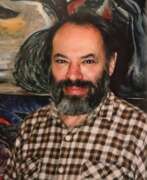

Boris Mendelevich Rapoport (Russian: Борис Менделевич Рапопорт) was a Soviet and Russian artist of the last third of the twentieth and early twenty-first centuries. He is known as an expressionist painter who worked in the genres of landscape, still life and portraiture.
Boris Rapoport at different periods of his career he worked as an architect and painter. His style reflected the expressionist traditions of the turn of the 19th and 20th centuries with a bias towards romanticism and a personal perception of the world. Since 1992 he has been a freelance artist and his work remains an important contribution to the art of this time.
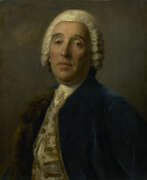

Francesco Bartolomeo Rastrelli was an Italian architect who worked mainly in Russia. He developed an easily recognizable style of Late Baroque, both sumptuous and majestic. His major works, including the Winter Palace in Saint Petersburg and the Catherine Palace in Tsarskoye Selo, are famed for extravagant luxury and opulence of decoration.
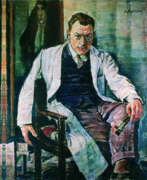

Nikolaus Sagrekow (Russian: Николай Александрович Загреков) was a Russian and German artist of the twentieth century. He is known as a painter, a representative of the "new materiality" movement, and also as an architect.
Nikolaus Sagrekow moved to Germany with his German wife in 1921 and remained there for the rest of his life. He taught portrait painting and nudes. In the late 1920s and early 1930s, the artist reached the peak of his creativity. He participated in many exhibitions in Berlin, Munich, Paris and Vienna. In 1952, the master received German citizenship and became deputy chairman of the Union of Berlin Artists. From the mid-1930s he began to engage in architectural work, and in 1960-1970 he created many paintings, including portraits of German political figures.
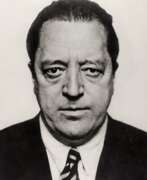

Ludwig Mies van der Rohe, born Maria Ludwig Michael Mies was a German-American architect and furniture designer. He was commonly referred to as Mies, his surname. Along with Alvar Aalto, Le Corbusier, Walter Gropius and Frank Lloyd Wright, he is regarded as one of the pioneers of modernist architecture.
In the 1930s, Mies was the last director of the Bauhaus, a ground-breaking school of modernist art, design and architecture. After Nazism's rise to power, with its strong opposition to modernism (leading to the closing of the Bauhaus itself), Mies emigrated to the United States. He accepted the position to head the architecture school at what is today the Illinois Institute of Technology in Chicago.


Victor Mikhailovich Vasnetsov (Russian: Виктор Михайлович Васнецов) was a seminal Russian artist, whose contributions to the world of art have left an indelible mark on cultural history. Born into a priest's family in 1848, Vasnetsov's journey into the realms of painting and sculpture was not just a pursuit of aesthetic beauty, but a mission to delve deep into the soul of Russian folklore and history. His works, characterized by their vivid storytelling and intricate detail, bridge the gap between the ethereal world of legends and the tangible reality of Russian cultural identity.
Vasnetsov's oeuvre is a testament to his versatility as an artist, spanning across genres from historical to mythological subjects. Among his most celebrated works are "The Bogatyrs" and "The Knight at the Crossroads," which not only showcase his mastery in painting but also reflect his deep engagement with the themes of heroism and destiny, central to Russian folklore. These masterpieces, housed in prestigious museums like the Tretyakov Gallery in Moscow, continue to captivate audiences with their compelling narratives and exquisite execution.
What sets Vasnetsov apart is not just his artistic skill, but his ability to encapsulate the essence of Russian culture and mythology in his work, making it an invaluable part of Russia's cultural heritage. His paintings are more than just visual spectacles; they are windows into the soul of a nation, narrating stories that have shaped the collective consciousness of the Russian people. For collectors and experts in art and antiques, Vasnetsov's works represent a confluence of historical significance and unparalleled artistic merit.
To stay abreast of the latest updates on sales and auction events featuring the works of Victor Mikhailovich Vasnetsov, we invite you to sign up for our updates. This subscription is tailored specifically for enthusiasts of culture, art, and antiques, ensuring you receive timely information on opportunities to add to your collection of valuable pieces.
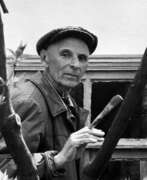

Sergei Efimovich Zakharov (Russian: Сергей Ефимович Захаров) was a Soviet artist of the twentieth century. He is known as a painter, graphic artist, watercolorist, designer, artist of monumental and decorative art and architect. For his work in Tajikistan he was awarded the title of Honored Art Worker of the Tajik SSR.
Sergei Zakharov worked on many projects during his career, including the decoration of theaters, government buildings and libraries in Tajikistan, as well as interior designs for Soviet motor ships. He also practiced easel painting and graphics, creating landscapes, still lifes and thematic works.
His works are in various museums, including the State Tretyakov Gallery and the State Russian Museum.








